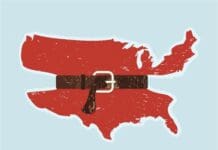United States citizens’ jobless claims have declined to under 500,000 new claims, per the latest reports. This new report comes amid rather large jobless claims from early May. While the latest week signals that fewer people are filing for unemployment, this doesn’t necessarily mean that employment growth will come this month. As claim reportings are always about a week behind, understanding the whole month’s total of weekly new jobless claims will help economists analyze unemployment trends better.
This latest report signals that fewer people are filing for employment — but that doesn’t mean employment numbers will go down, or that employment numbers will grow for May. Economists are tracing these new jobless numbers and how certain areas around the United States are doing.
For example, factory employment has fallen during May in the mid-Atlantic area of America. Meanwhile, businesses have increased employees’ work hours — rather than hire additional workers — in Eastern Pennsylvania, Delaware, and Southern New Jersey areas. These increased worker’ hours signals that these areas may be having trouble finding new workers, and therefore have instead increased hours.
The United States has struggled as the workforce opened up again this year after struggling during the COVID-19 pandemic almost all of last year. As vaccinations became available to all of the public in 2021, more American adults have begun the steps to become fully vaccinated. As a result, certain workforce restrictions have become less necessary. Already the CDC has issued new guidelines which state that vaccinated citizens do not have to wear a mask indoors or outdoors, nor do they have to social distance.
Last year many Americans were laid off and struggled with unemployment because of the COVID-19 pandemic. Now, as vaccinations are readily available to those who want them, the workforce is opening up a bit more as more people travel, work, and naturally spend money. However, there are still people filing for unemployment, and employment growth isn’t increasing as some economists may hope.
Nationwide, many areas are struggling with an increase in business but a lack of workers applying for employment. This may be for many reasons. While some states have cut off $300 federal unemployment checks that were given to those on unemployment, stating that this is why employment growth hasn’t increased, others state that worries over the COVID-19 pandemic are still hindering employment choices.
While there has been a reduction in layoffs, there has also been a slowing in the hiring process, which has left an overall reduction in supplies. There have recently been raw material shortages around the nation, possibly because of the labor shortage that many factories and companies have been facing in the last few months. These material shortages also may be because of recent large demands that have occurred because of businesses and companies reopening after being closed down, or disrupted, all of last year because of COVID-19.
While the latest weekly jobless claims have declined, economists would still like to survey the monthly numbers in a few weeks to properly understand just how unemployment is affecting the United States — and how labor shortages may possibly continue to affect citizens.













